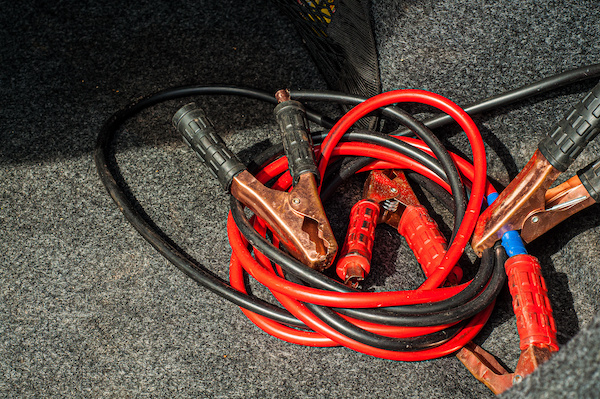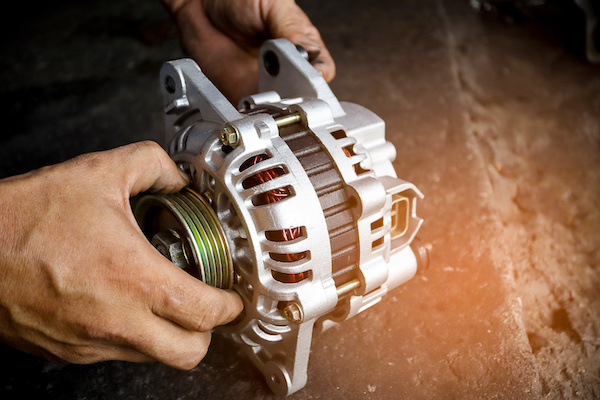Posted on 10/4/2021

Keeping a stash of emergency items in one place in your vehicle can be very beneficial for you and others in dire situations. Most of these items will be useful in unanticipated circumstances. Millions of car accidents and breakdowns happen every year. And to be frank, many of them often result in injuries and even death. With simple tools, items, or even non-perishable food on hand, it can do as much as save a life. You can minimize the stress of this ever happening to you by carrying a bag of necessities. Now, you can do your part by organizing and collecting them! Durable bag to store supplies No-spill gas can (2-5 gal.) Flashlight Batteries Compass Jumper Cables Jump Starter - Portable power bank for car, phones, and other electronics Antifreeze Bottle of Washer Fluid First Aid Kit Tire Pressure Gauge Spare Tire and Jack Fix-A-Flat Can or Air Compressor Bungee Cords Small Foldable Shovel Multi-tool or Small Tool Kit Heavy-Duty Gloves Cable Ties Duct Tape Reflec ... read more
Posted on 9/7/2021
.jpeg)
Your brakes are essential for your vehicle and your safety. However, most people neglect their brake system when it comes to proper maintenance. For example, you should always make sure you have enough brake fluid in your car. Without brake fluid, your vehicle will not be able to come to a complete stop. In other words, your brakes depend on this particular solution to perform their job correctly in many conditions. There are several types of brake fluid you should know. Here are the five different types of brake fluid and their characteristics: DOT 3 - This type of brake fluid is glycol-based and has been used for a very long time. It is a rich amber color, and it is known to have the lowest boiling point. DOT 4 - DOT 4 has become more widely used by vehicle manufacturers, but it is used mostly by European car manufacturers currently. It is a glycol-based solution but has a higher boiling point than DOT 3. It also costs more than DOT 3. DOT 5 - This type of brake fluid is dif ... read more
Posted on 8/3/2021

Distracted driving is the most common cause of horrific and deadly car collisions. From digging for something you dropped to sipping on coffee to checking your phone, they're all considered hazardous activities while driving. As a conscientious driver, you should refresh your understanding of distracted driving and take these tips to improve your driving habits and focus on the road! Cell Phone As you can probably guess, your phone is the biggest distraction out there. Because phones are a leading cause of vehicle accidents and fatalities, most states have enforced laws to restrict texting and phone calling while driving. We recommend enabling "Do Not Disturb" mode and leaving your phone out of your sight whenever you get behind the wheel to go. Control Systems Finding your favorite song is a difficult job when running a vehicle. It may seem natural for you, but research suggests that it's a common cause of traffic accidents. It would be best ... read more
Posted on 7/3/2021

When many people think about their car’s electrical system, they instantly think of the battery. While the battery does give electrical charges to start your vehicle, the alternator is the component that charges your battery and runs electrical functions while your car is moving. Without a functioning alternator, your vehicle will abruptly stop all the time. What Is the Alternator? The alternator is a fundamental aspect of your car because it converts power from the engine into electrical energy. This electrical current works to keep your vehicle’s electrical systems operating and keeps the battery charged. It was coined an alternator because it generates an alternating current that changes direction periodically. 5 Signs of a Bad Alternator The alternator is built up of many components such as bearings, rotors, and other internal parts. Over time these parts wear out, which means you need to take a trip to the auto shop. Here are some sympto ... read more
Posted on 6/8/2021

Many adults can drive safely well past their 70s, 80s, and beyond. However, seniors are linked to various physical challenges related to aging that can interfere with driving. It is so important for older drivers - and the people who care for them, such as family and friends - to evaluate and spread these helpful tips to keep them safer on the road. The following tips are general tips and resources for safe drivers (for any age group)! TIPS FOR SAFE, OLDER DRIVERS Mute your cell phone before operating the vehicle - Texting or talking while driving is one of the most common distractions while being on the road. Leave your cell phone on "Do Not Disturb" and away from your surroundings while you're driving. Always wear a seat belt - This one should be a no-brainer, considering 49 out of 50 states enforce it as a law to be buckled in every time you get in a vehicle. If it is uncomfortable, adjust the shoulder mount or purchase a pad that s ... read more